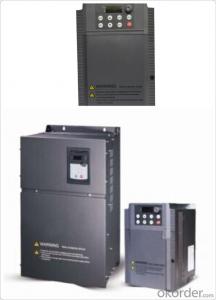Solar Inverter 5.5kw
Solar Inverter 5.5kw Related Searches
Best Solar Inverter For Home Home Power Inverter For Solar Best Inverter For Solar Pv Best Inverter For Solar Mini Solar Inverter For Home Solar Panel Inverter For Rv Inverter For 5kw Solar System Inverter For Solar Power Plant Inverter For Home Solar Solar Power Inverter For RvHot Searches
China Mppt Solar Inverter Solar Pump Inverter Price Solar Inverter Off Grid Price Off Grid Solar Inverter Price Mppt Solar Inverter Price 4kw Solar Inverter Price Solar Inverter On/Off Grid Solar Inverter Off Grid 1000w China 3 Phase Solar Inverter China Solar Inverter 3kw 220v China 220v Solar Inverter Solar 3 Phase Inverter Price 3 Phase Solar Inverter Price Solar Inverter Single Phase Type Of Inverter For Solar Types Of Inverter For Solar Used Solar Inverter For Sale Inverter Size For Solar System Solar Edge Inverter For Sale 5kw Solar Inverter For SaleSolar Inverter 5.5kw Supplier & Manufacturer from China
Okorder.com is a professional Solar Inverter 5.5kw supplier & manufacturer, offers integrated one-stop services including real-time quoting and online cargo tracking. We are funded by CNBM Group, a Fortune 500 enterprise and the largest Solar Inverter 5.5kw firm in China.Hot Products
FAQ
- A grid-tied solar inverter works by converting the direct current (DC) electricity generated by the solar panels into alternating current (AC) electricity that can be used to power household appliances and be fed back into the electrical grid. It synchronizes the frequency and voltage of the solar-generated AC electricity with that of the grid, allowing seamless integration and transfer of power. This inverter also ensures safety by monitoring the grid connection and automatically disconnecting the solar system from the grid during power outages or maintenance work. Overall, it enables efficient utilization of solar energy and allows homeowners to reduce their reliance on fossil fuels while potentially earning credits for excess electricity generated.
- A solar inverter typically communicates with other devices through wired or wireless connections. It can use protocols like Modbus, RS485, or Ethernet to establish communication with monitoring systems, smart meters, or other devices. This allows for data exchange, control signals, and monitoring capabilities, enabling efficient management and integration of the solar power system with other components of a renewable energy infrastructure.
- Yes, a solar inverter can be used with dual-axis solar trackers. A solar inverter is responsible for converting the direct current (DC) generated by the solar panels into alternating current (AC) that can be used to power electrical devices or be fed into the grid. The dual-axis solar trackers enable the solar panels to follow the sun's movement in both horizontal and vertical directions, maximizing their exposure to sunlight throughout the day. The solar inverter can still perform its function of converting DC to AC regardless of the type of solar tracking system used.
- Yes, a solar inverter can be connected to a generator. This can be useful in situations where solar power is not sufficient or unavailable, allowing the generator to supplement the power supply.
- Yes, a solar inverter can be used with a solar car charging system. The solar inverter is responsible for converting the direct current (DC) produced by the solar panels into alternating current (AC) that can be used to charge the car's batteries. By using a solar inverter, the solar car charging system can efficiently utilize the energy generated by the solar panels to power electric vehicles.
- The working principle of photovoltaic grid - connected inverter
- Inverter will be converted into alternating current DC, if the DC voltage is low, then through the AC transformer boost, that is, the standard AC voltage and frequency. For large-capacity inverter, because the DC bus voltage is high, AC output generally does not require transformer boost that can reach 220V, in the small and medium capacity of the inverter, because the DC voltage is low, such as 12V, 24V, It is necessary to design a boost circuit.
- Yes, a solar inverter can be integrated with a smart home system. By connecting the solar inverter to the smart home system, users can monitor and control their solar energy production and consumption remotely. This integration allows for better energy management, optimizing the use of solar power, and potentially saving on electricity bills.
- Yes, a solar inverter can be used with a grid-tied system and a battery backup. The solar inverter is responsible for converting the direct current (DC) generated by the solar panels into alternating current (AC) that can be used to power appliances and feed back into the grid. In a grid-tied system with a battery backup, the solar inverter can also charge the batteries during the day when there is excess solar energy. This allows for the stored energy in the batteries to be used during power outages or when the grid is not available.















































